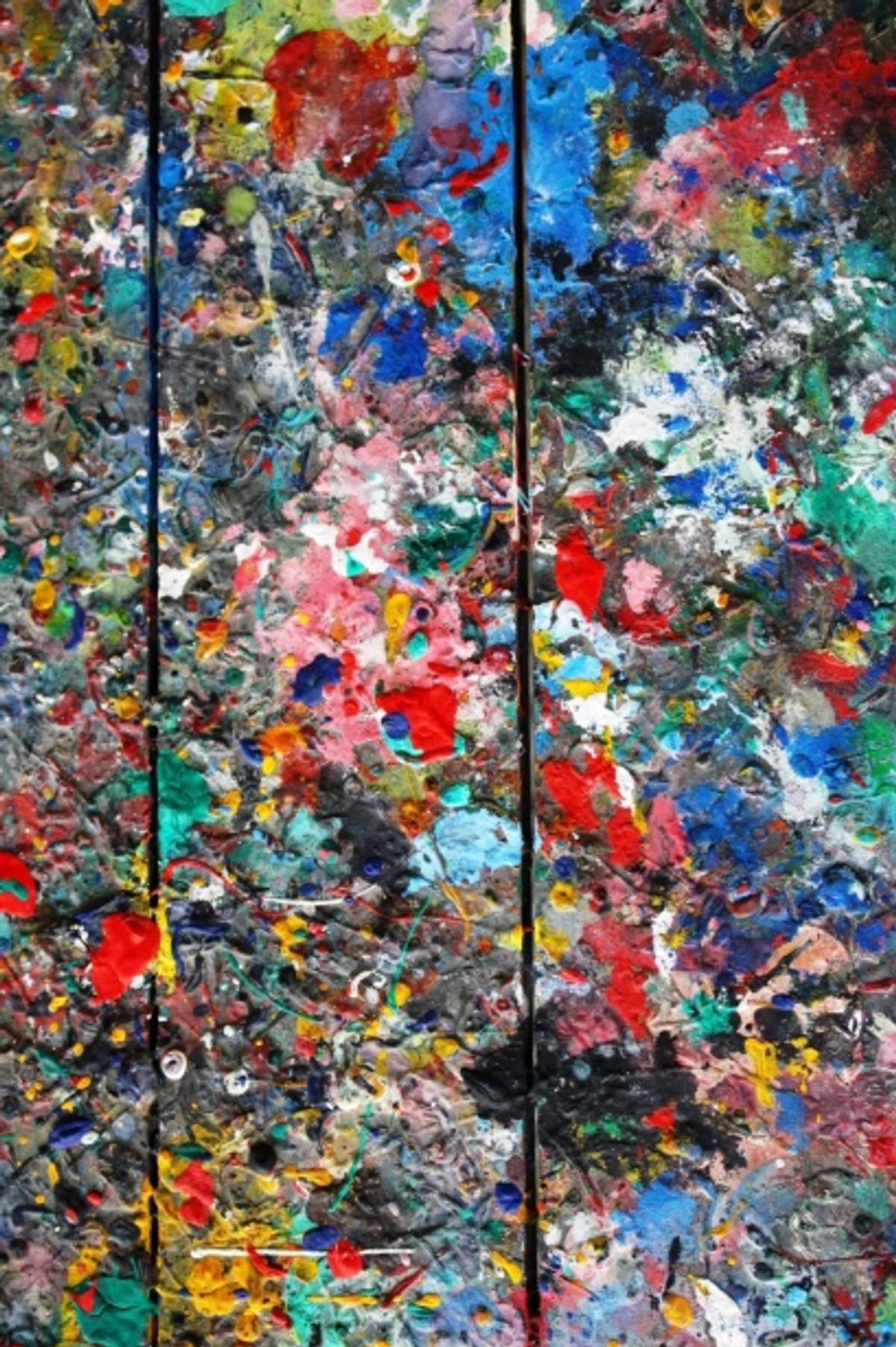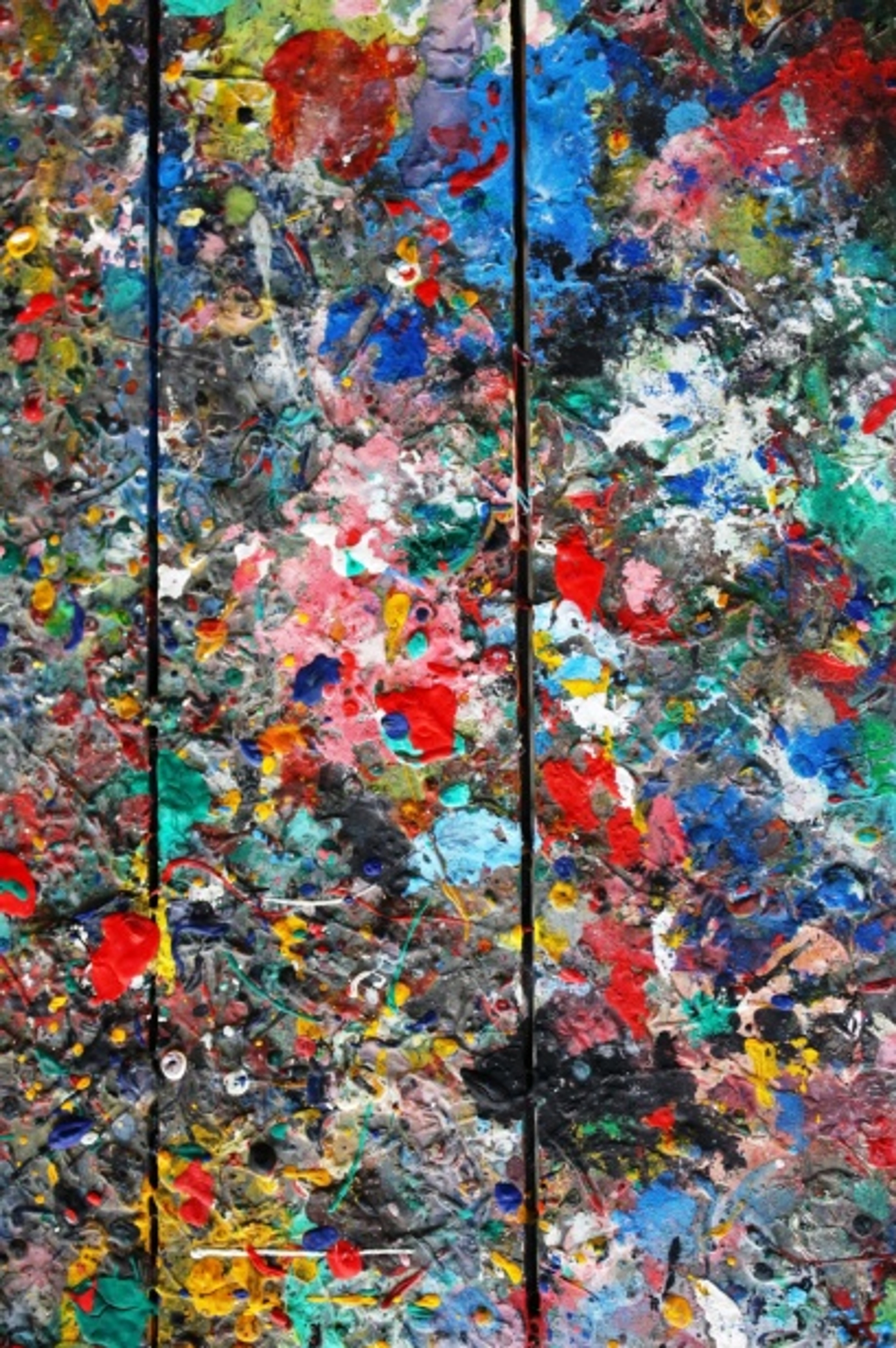
Murals: Public Art, Urban Identity & Community's Canvas
A deep dive into urban murals, exploring their creation, diverse styles, profound impact on a city's identity, and role in sparking vital community dialogue. Discover the stories walls whisper.
Murals: Public Art, Urban Identity & The City's Story – A Personal Dive
I’m going to be honest with you: sometimes, when I’m wandering through a new city, or even just my own familiar Den Bosch, I get a little lost in my head. My thoughts drift to composition, the play of light, the emotional language of color – all that lovely, chaotic artist thinking, you know? My mind becomes a delightful, beautiful mess, a blend of observation and imagination, almost mirroring the chaos and control I strive for in my own canvases. But then, every so often, something just stops me cold. A colossal, vibrant painting erupting on a brick wall, transforming an otherwise unremarkable alleyway into a moment of pure, unexpected beauty. It's as if the city itself decided to whisper a profound secret, right there, for everyone to ponder. This, I believe, is where the story of urban murals truly begins – not just as art, but as an integral part of our shared urban narrative. Murals, unlike many other forms of public art, uniquely engage with the existing urban surface, literally becoming part of the city's skin. This journey, I've found, encompasses everything from how these giant artworks are crafted, to their undeniable role in shaping urban identity, driving community engagement, and even sparking fierce debates about whose stories get to be told on a public wall. It's a grand conversation, really, and I'm fascinated by every brushstroke of it.
These are the moments when public murals stop you in your tracks, grabbing your gaze and, more often than not, grabbing a piece of your heart. It’s a connection often forged through relatable imagery or profound emotional resonance, almost like a sudden, shared understanding. For me, the way colors clash and harmonize in a mural, creating a mood or emphasizing a message, is just as potent as in my abstract work; it’s a direct conduit for emotion. They're more than just splashes of paint; they’re the vibrant, beating heart of a city, its collective memory, its defiant shouts, all laid bare for everyone. If you ask me, these monumental artworks play an absolutely crucial – though often unsung – role in shaping what we’ve come to know as urban identity: that distinctive personality, the unique vibe, that indefinable je ne sais quoi that makes a place feel like home, or an unforgettable adventure. This journey into the soul of a city, revealed one painted wall at a time, is precisely what fascinates me, echoing the way I try to tell a story in my own abstract art prints.

Walls That Speak: The City's Unofficial Gallery
Think about it for a moment. You're walking down a street, perhaps a bit rundown, maybe a little too uniform. Then, bam! – a wall explodes with a narrative, a portrait, or even a swirling abstract design. Suddenly, that street isn't just a street anymore. It has a story, a focal point, a conversation starter. It's like stumbling upon a secret garden in the middle of a concrete jungle – an unexpected delight. That’s the undeniable power of these large-scale artworks. They transform mundane facades into living galleries, breathing life into neglected corners and giving voice to communities. Murals, unlike art tucked away in museums (though I love those too, trust me, I run one in Den Bosch), are for everyone. No ticket required, no hushed tones. They’re democratic, sometimes controversial, and always, always part of the public discourse – the ongoing conversation about who we are and what we value as a society.
Murals come in so many forms, each with its own story, its own artistic philosophy. We see the socially charged realism of Mexican Muralism in the early 20th century, where artists like Diego Rivera, José Clemente Orozco, and David Alfaro Siqueiros used public walls to educate and unite a post-revolutionary nation, often depicting epic historical narratives and the struggles of the working class. Or the bold, political statements born from graffiti art – moving beyond simple tagging to intricate, multi-layered pieces that push boundaries and challenge authority, exemplified by pioneers like Jean-Michel Basquiat (before his gallery fame) and contemporary figures like Banksy. This evolution from illicit street tagging to recognized 'street art' often involves a fascinating dance between public spaces and even major art galleries, blurring the lines of what's considered fine art. The raw energy of an artist creating in public, often against the clock, reminds me a bit of the unexpected chaos and control I strive for in my own compositions. Beyond these, there are the uplifting narratives of the WPA murals in the US during the Great Depression, designed not only to boost morale but also to provide much-needed employment for artists, celebrating American labor through the work of artists like Thomas Hart Benton. And of course, the vibrant, ever-evolving street art scene you find at contemporary mural festivals in cities like Bristol or Berlin, showcasing everything from detailed illustrative scenes to sprawling neo-expressionist explosions of color. These contemporary works often gain global traction thanks to digital platforms and social media, reaching audiences far beyond their physical locations. You also find clever trompe l'oeil murals that trick the eye by creating realistic optical illusions – imagine a flat wall appearing to have a grand archway leading to an imaginary garden – making a flat wall appear to have depth or an opening. Or expansive abstract commissions that enhance architectural lines, transforming sterile urban structures into canvases of wonder with geometric patterns or flowing organic forms. Globally, you might encounter the decorative integration of murals influenced by Art Nouveau or Bauhaus principles in historic buildings, where functional design meets organic lines or geometric precision. Or the distinctive storytelling and vibrant palettes of Latin American street art reflecting indigenous cultures and political histories, often portraying mythological figures, community struggles, or calls for social justice. And the often hyper-detailed, narrative-driven Asian urban art scenes that weave contemporary social commentary with traditional aesthetics, such as intricate depictions of modern city life interwoven with ancient folklore motifs. Each movement and style adds its own unique chapter to the city’s narrative, making the street a dynamic, open-air art gallery.
Mural Movement/Style | Key Characteristics | Examples/Impact |
|---|---|---|
| Mexican Muralism | Social realism, political messages, historical narratives, public education | Diego Rivera, Orozco, Siqueiros; post-revolutionary national identity |
| Graffiti Art | Illicit origins, bold lettering, intricate designs, social commentary, counter-culture | NYC subways, Banksy; democratizing art, challenging establishment |
| WPA Murals (US) | Depression-era, public works, optimistic themes, American realism, community spirit | Post offices, public buildings; boosting morale, providing artist employment |
| Contemporary Street Art | Diverse styles (illustrative, abstract, political, decorative), large scale, often commissioned | Berlin, Bristol, Miami's Wynwood Walls; urban revitalization, tourism, social media reach |
| Trompe L'oeil Murals | Illusionistic painting, 'fooling the eye', architectural integration | Parisian facades, urban optical illusions; adding whimsy, depth to flat surfaces |
| Abstract Commissions | Non-representational, geometric or organic forms, focus on color/line/shape, architectural enhancement | Modern urban spaces; elevating aesthetics, contemplative experiences |
| Art Nouveau/Bauhaus | Decorative integration, organic forms, functional design | Architectural facades, interior public spaces; historic building aesthetics, geometric precision |
| Latin American Street Art | Indigenous themes, political commentary, vibrant colors, social justice | Bogotá, Valparaíso; cultural identity, community empowerment |
| Asian Urban Art | Hyper-detailed, narrative-driven, contemporary social commentary | Tokyo, Shanghai; local stories, modern urban challenges, traditional aesthetics |
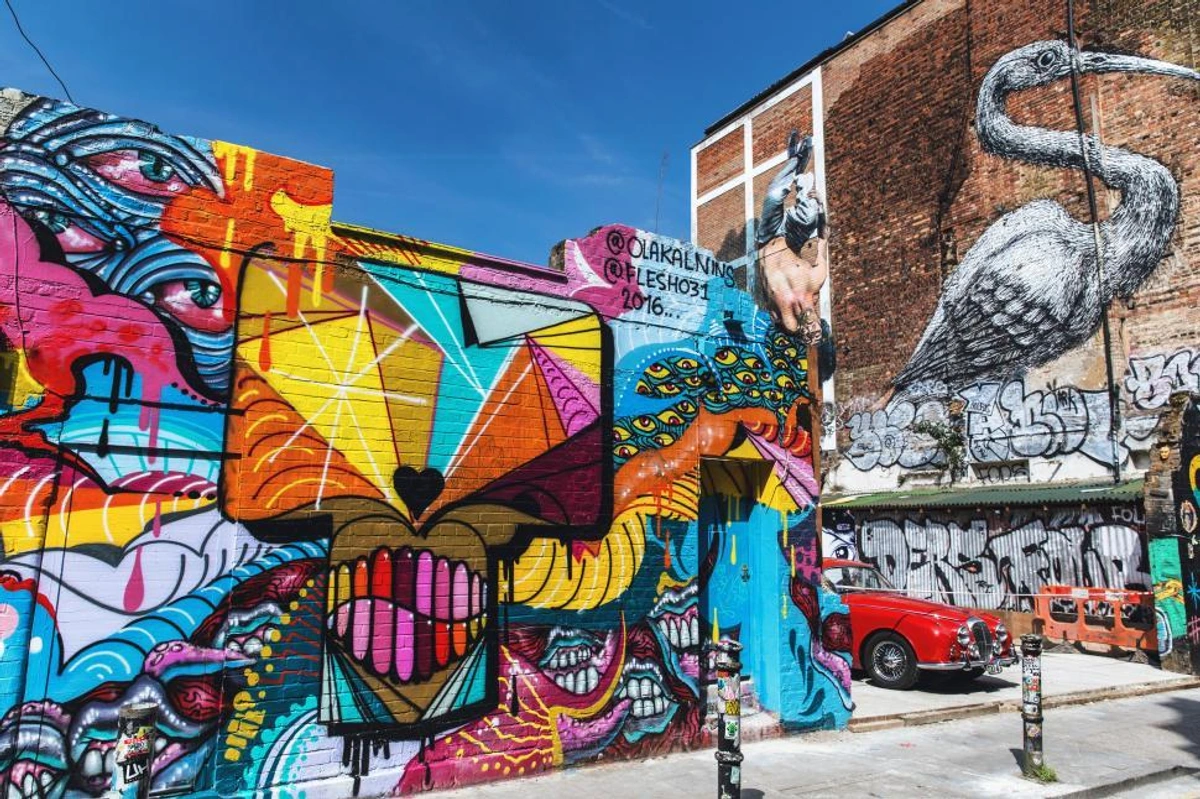
The Craft Behind the Canvas: Bringing Urban Giants to Life
Ever wondered what goes into creating these urban giants? You might think it’s just a bigger canvas, but trust me, it’s far from a simple splash of paint. It's an intricate dance between vision, community, and sheer physical grit. For me, the journey of bringing an idea from a tiny sketch to a massive artwork, like some of the pieces documented in my artist's timeline, parallels the ambition of these muralists. It's about vision, persistence, and making that vision a shared reality.
From Vision to Wall: Planning & Design
The process often begins with extensive community consultations, facilitated by public art commissions or local art organizations – entities I deeply respect for their role in bridging artists with communities. I've had my own experiences balancing client input with artistic vision, and it’s a delicate dance! This isn't just about selecting a pretty picture; it's about deep dives into local history, community aspirations, and shared values. A "deep dive" might involve historical research, ethnographic studies, or engaging directly with residents through workshops to unearth the stories that truly resonate. It's a careful negotiation of what stories need to be told, and by whom. Crucially, the site-specific considerations are paramount: the building’s architecture, its position, the surrounding environment, and how the mural will interact with its urban context are all integral to the design. Legal and permitting aspects, often overlooked, are also critical here, involving city permits, property owner agreements, and sometimes even temporary road closures. This is followed by meticulous design phases, sometimes using advanced digital mock-ups and projections, allowing stakeholders to visualize the final piece in situ and ensuring the vision aligns with community input and technical feasibility. And let's not forget the unsung heroes here: the public art administrators and curators who tirelessly facilitate these complex projects, bridging the gap between artistic vision and urban reality.
Tools of the Trade: Materials & Techniques
Artists might use a variety of techniques, from freehand spray-painting (like a graffiti artist creating intricate pieces) to grids, projections, or even stencils for precision. New technologies, however, are constantly evolving the field. Beyond augmented reality overlays that allow viewers to interact with hidden layers of storytelling via their smartphones (imagine accessing historical facts or artist interviews just by pointing your phone at a mural!), digital design tools are revolutionizing planning, and 3D printing is even being explored for creating complex stencils or relief elements. Drones are increasingly used for mapping large surfaces, inspecting progress from above, and even assisting in paint application for inaccessible areas or large-scale base layers. And let’s not forget the emerging trend of digital murals or projection art, where temporary or dynamic images are projected onto buildings, offering new possibilities for ephemeral, interactive, and less physically invasive public art. Materials range from traditional acrylic and latex paints to highly durable, weather-resistant exterior-grade paints designed to withstand the elements, ensuring the artwork's longevity against sun, rain, and grime. Low-VOC (volatile organic compound) paints are often chosen not just for sustainability, but also for the improved air quality for both artists and the public during application, and reduced environmental impact throughout the mural's life. And on a more conscious note, many artists and organizations are exploring sustainable practices, using eco-friendly cleaning methods to minimize environmental impact.
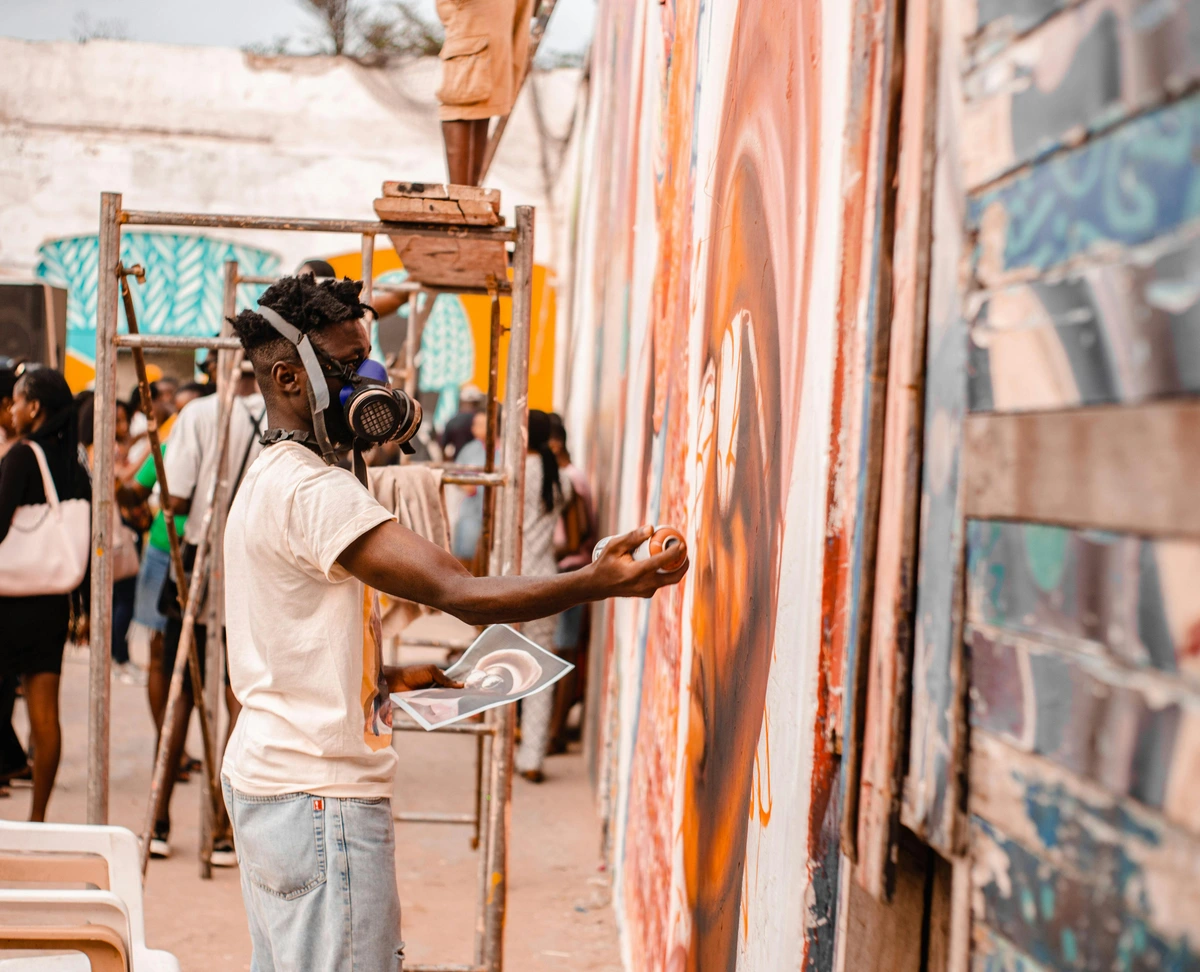
The Unseen Labor: Challenges & Preservation
Then there’s the sheer physical challenge: scaffolding, lifts, working in all weather conditions, and often, long hours. I mean, my studio work has its challenges – wrestling with a particularly stubborn composition, or getting lost in a creative rabbit hole for hours – but I can't imagine battling wind and rain on a 50-foot wall while trying to get a perfect line! It’s a testament to the dedication of these artists, many of whom are driven by a passion to transform public spaces and connect with people on a visceral level. The longevity and preservation of murals are constant battles. Beyond the immediate wear and tear of weather and the occasional unfortunate act of vandalism (which some might argue is itself a form of dynamic public expression, depending on context and intent), these artworks face unique challenges. Dedicated conservation efforts often involve specialized cleaning techniques, such as laser cleaning for delicate pigments or targeted chemical washes, protective coatings like UV-resistant sealants or anti-graffiti varnishes, and ongoing monitoring. Sometimes, the original artist, or a team of conservators, must periodically restore sections, which reminds me that an artist's work is never truly 'done' – there’s always an element of care and ongoing engagement, even after a piece leaves the easel. Art schools and specialized institutions are increasingly offering courses in public art conservation, recognizing the unique skills required to protect these monumental works. A particularly poignant challenge is the potential for murals to be removed entirely due to urban development, demolition, or changes in property ownership, leading to the loss of significant public artworks.
More Than Just Spectators: Community Engagement & Economic Impact
What if art wasn't just for a community, but also created by it? This is where the magic of true public engagement often happens, transcending mere spectatorship. I mean, imagine being a part of something so monumental, something that becomes a permanent fixture in your neighborhood! It’s an incredible feeling, I think, to literally put your hand on something that changes the face of your city. Many public art projects involve local residents in every stage, from brainstorming initial designs in workshops, contributing to painting sessions, to even fundraising. This collaborative effort isn't just about the end product; it’s about the journey, the shared experience. It builds bridges, strengthens social ties, and empowers individuals to literally leave their mark on their environment. One project I remember seeing in a revitalized neighborhood involved local youth working with a professional artist to depict their hopes for the future, fostering both artistic skill and civic pride. Educational institutions and art schools also play a crucial role, often partnering with communities to facilitate these projects and train the next generation of muralists.
This is particularly vital for marginalized communities, where murals can serve as powerful tools for visibility, representation, and empowerment. By giving voice to often-overlooked narratives and faces, these artworks can foster solidarity and cultural pride – for example, a mural celebrating the vibrant traditions and history of an immigrant community can provide a powerful symbol of belonging and recognition. It’s like a giant, vibrant team-building exercise for an entire community, only with more paint and considerably less awkward ice-breakers. Murals, in this context, act as powerful catalysts for social change, fostering dialogue on pressing issues, building empathy between different groups, and empowering marginalized voices by providing them a prominent, visible platform. I've seen them directly contribute to local policy changes, too, for example, a mural highlighting environmental degradation might galvanize residents to advocate for new recycling programs, or one celebrating immigrant stories could lead to greater investment in cultural community centers.
I remember seeing a community mural project once where kids were helping paint sections of a massive piece. Their faces were just alight with pride, covered in smudges of paint! That kind of engagement transforms passive residents into active stakeholders. It can even lead to revitalized neighborhoods, increased foot traffic for local businesses, and a general feeling of shared ownership and civic pride. This isn't just anecdotal; studies have shown that well-executed public art initiatives can directly contribute to local economic growth, creating jobs for artists, designers, and support staff, attracting visitors, and boosting property values. It's a testament to how art can be a catalyst for social change, creating tangible improvements that extend far beyond the visual, almost like adding an extra layer of meaning to a raw canvas.
And what about the artists themselves? While the community benefits are immense, the economic reality for muralists can be challenging. Pricing large-scale commissions, navigating contracts, and ensuring sustainable income are complex aspects of a muralist's career. Often, public art funding relies on grants, philanthropy, or local government initiatives, which can be inconsistent. Yet, for many, the passion for public impact outweighs these hurdles, driven by the unique satisfaction of seeing their work embedded in the daily lives of countless people. Plus, for artists like myself, there’s a distinct connection to the craft, a shared understanding of bringing a large vision to life that transcends the specific medium, much like how I approach designing my own abstract art prints.
Weaving a Sense of Place: Urban Identity and Belonging
So, once these monumental artworks are physically on the wall, what then? One of the most profound impacts of public murals is how they knit themselves into a city's unique identity. What exactly is urban identity, anyway? For me, it’s that shared understanding, that collective memory and sense of belonging that residents feel towards their city. It’s the visual language that makes a place distinctive, almost like a city's personal brand made visible. Murals often crystallize that feeling, acting as tangible anchors in a constantly shifting urban landscape. They're like visual fingerprints, distinct to each locale. They don't just reflect a city's identity; they actively shape it, becoming iconic symbols that define neighborhoods and even entire metropolitan areas.
I’ve found that murals often tell stories unique to their location. They might depict local heroes, historical events, cultural traditions, or even just the daily life of the neighborhood. This isn't just pretty art; it’s history class and cultural studies rolled into one, etched onto the very fabric of the city. For residents, it fosters a deeper sense of belonging and community pride. "That’s our mural,” they might say with pride, feeling that immediate connection, that sense of 'place attachment' – a profound psychological bond forged through shared visual experience. This visual ownership reduces urban blight, fosters a sense of stewardship, and can even contribute to a greater sense of psychological well-being, transforming drab spaces into sources of daily inspiration and wonder. It’s a visual landmark, a point of collective ownership that differentiates one block from the next, almost like a secret handshake for locals. Think of the vivid East Side Gallery in Berlin reflecting its turbulent past and vibrant subcultures, the diverse narrative murals of Philadelphia's Mural Arts Program celebrating its communities and aspirations, or the vibrant El Dorado mural in Bogotá honoring indigenous myths and the rich historical narratives of Colombia. Murals can also showcase a city's economic history, perhaps celebrating an industrial past or envisioning a tech-driven future in places like Detroit or Silicon Valley, giving visual voice to a city's evolution. In some places, murals honor the vibrant narratives of indigenous peoples, keeping their stories alive and visible in modern cityscapes, or capture the hopes and struggles of immigrant communities, providing a voice and a face to those often marginalized. These visual narratives create a profound link between people and place.
Indeed, some cities have become world-renowned for their mural scenes, attracting significant mural tourism. Think of the vibrant Wynwood Walls in Miami, the colorful murals of Valparaíso, Chile, or even smaller towns that have used murals to revitalize their downtowns and draw visitors, boosting local economies. These artworks become part of a city's brand, a unique selling point on the global stage. Beyond just drawing tourists, this influx often translates into increased foot traffic for local businesses, leading to higher sales for cafes, shops, and galleries, and even sparking local events and festivals centered around the art, ultimately creating new jobs and economic opportunities for the wider community. The sheer scale and location of a mural also deeply affect its impact. A towering mural on a busy thoroughfare demands attention, becoming an instant icon, while a smaller, intricately detailed piece tucked away in a quiet alleyway invites discovery, offering a more intimate connection. Each placement, whether a bold statement or a subtle whisper, sculpts how we interact with the urban fabric.
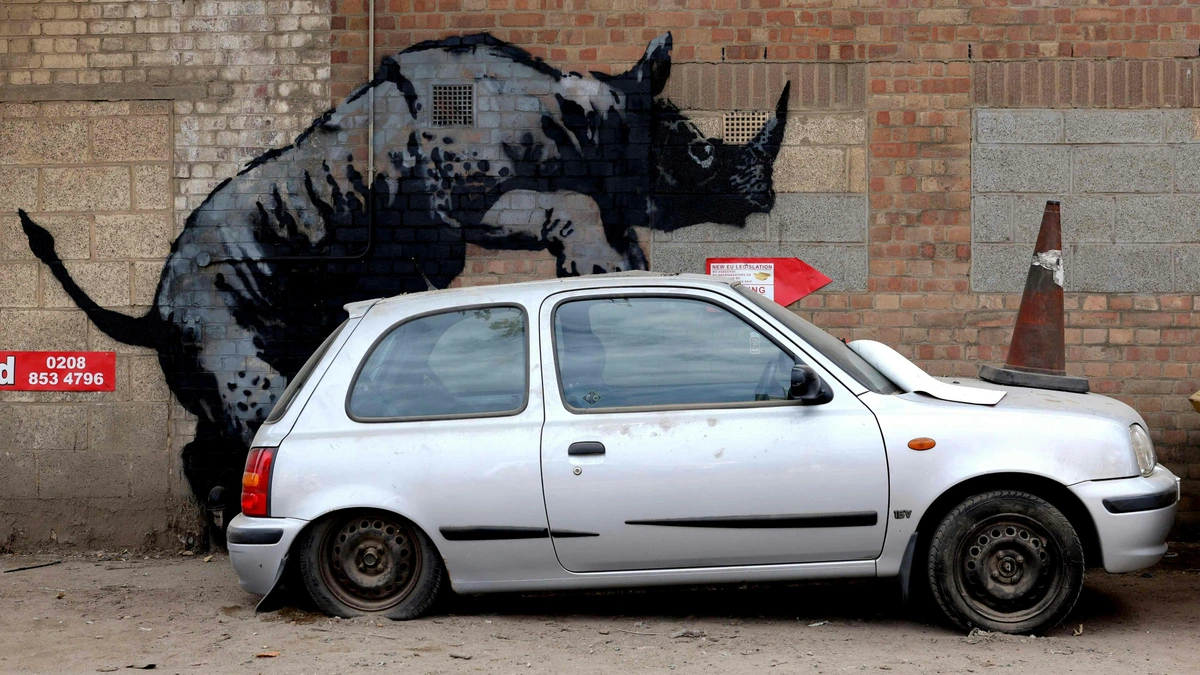
I’ve also noticed how murals can act as subtle wayfinders, landmarks in the urban jungle. “Turn left at the giant blue whale mural,” you might tell a friend, or perhaps “meet me by the abstract piece that looks like a dancing sun.” They become part of the collective memory and navigation of a place. It's almost like the city itself is developing its own distinct visual code, a tangible language of line right there on its walls, a language I find myself constantly exploring in my own art, though perhaps on a slightly smaller scale.
Murals as a Cultural Mirror: Defiance, Dialogue, and Dreams
What truly fascinates me is how murals serve as powerful reflections of local culture, often acting as visual megaphones. They can celebrate diversity, highlight social issues, preserve forgotten histories, or express collective hopes for the future. From the sharp political statements of a Banksy to the vibrant neo-expressionist energy of a Basquiat-inspired piece, they act as a visual narrative of who a community is and what it values. Take the iconic murals of Belfast, for instance, which powerfully illustrate political divisions and aspirations, or the vibrant tributes to Black history and culture found across American cities. In post-apartheid South Africa, murals have been instrumental in fostering national unity and commemorating historical struggles. You also find them narrating stories in post-colonial contexts, reclaiming identity and history on public walls, often depicting indigenous symbolism and challenging colonial narratives.
And about "whose stories get to be told" – this is where the conversation gets thorny. Murals can be incredibly empowering, celebrating community-led narratives and giving voice to the marginalized. However, they can also fall flat, or worse, cause harm through misrepresentation or cultural appropriation. I've seen debates erupt where an artist, often well-intentioned but from outside a community, depicts its struggles or uses its symbols superficially without genuine consultation or understanding, leading to feelings of exploitation rather than empowerment. Conversely, successful community-led projects ensure authenticity and deep resonance, like the extensive participatory process behind many indigenous narrative murals in Canada or Australia. Across different cultures, the approach varies: in some, murals are state-commissioned tools for national narratives (like the overt propaganda murals glorifying leaders in North Korea or Soviet-era worker art), while in others, they are truly grassroots expressions of dissent or celebration, offering a vital counterbalance. How do murals in your community reflect its unique story or challenges?
They're not just passive art, though; they're dynamic participants in public discourse. I’ve seen murals spark intense debates about historical memory, gentrification, or even just artistic taste, forcing communities to confront their shared values. Think of the controversial 'Crucifixion' mural by George Biddle in the 1930s, or more recently, community reactions to changing street art in rapidly gentrifying neighborhoods. A notable example is the 'Maiden of the Future' mural in San Francisco's Mission District, which sparked heated debate about cultural displacement. Conversely, a powerful mural can galvanize support for a local cause, raising awareness for environmental protection, celebrating LGBTQ+ rights, or advocating for mental health, even leading to local policy changes or community organizing. They are, in essence, tangible points of discussion, often leading to tangible social change and advocacy. This makes them far more accessible than a dusty old book, a living archive, constantly updated and evolving.
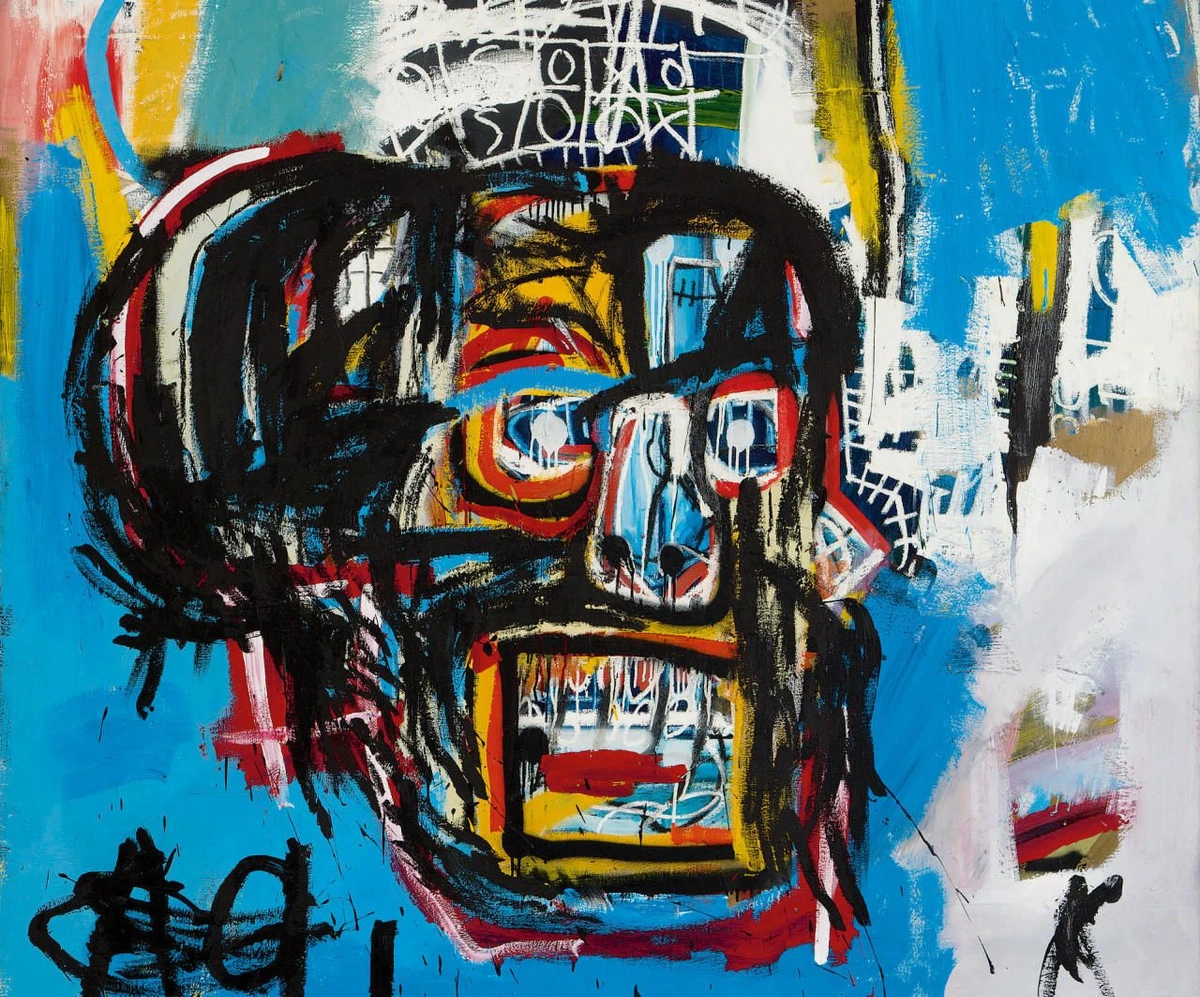
This is where my own artistic journey really connects. Whether I'm exploring composition or delving into the emotional impact of color, I'm trying to tell a story, evoke an emotion. Murals do that on a grand scale, often with raw, immediate impact. It’s an incredible form of public dialogue, a potent visual megaphone for the collective consciousness.
The Realities: Challenges and Controversies
Is it all vibrant colors and community celebrations? Not always, I’m afraid. Murals come with their own set of challenges, often sparking complex debates.
There are often debates about themes – what’s appropriate? Who decides what gets etched onto a public wall? Sometimes, they face issues with maintenance, uncommissioned markings (what some might call "vandalism," though the line is often subjective and debated, particularly in street art circles, concerning intent, artistic merit, and the dynamic nature of public space), or simply the relentless forces of nature wearing them down over time. It’s a constant battle against decay, a testament to their often fleeting, yet powerful, nature. This ephemeral quality is particularly poignant for much of street art, where a piece might be painted over or decay within weeks, contrasting sharply with the desire for permanence in highly-funded commissioned murals that aim to last decades. We also see temporary murals or performance murals, designed from the outset to exist for a limited time, challenging our notions of art's permanence and inviting a more urgent, present engagement.
Ethical Tightropes: Ownership, Appropriation, and Propaganda
Beyond maintenance, murals navigate complex ethical waters. Issues of ownership arise: who owns the image, the concept, especially if it was community-generated? And what about the artist's copyright, especially if a mural becomes commercially exploited (e.g., photographed and used in advertisements or merchandise without permission) or removed without consent? Legal battles over mural rights are becoming increasingly common, highlighting the need for clear agreements. And then there's cultural appropriation, where images, symbols, or narratives from one culture are used by artists from another without proper understanding, permission, or respect, leading to potential harm or misrepresentation. Imagine a non-indigenous artist using sacred tribal symbols in a mural without consulting elders or understanding their deep spiritual significance – a well-meaning act that could deeply offend and disrespect. And what about the potential for propaganda? Murals have historically been used by regimes or political groups to push agendas (consider the grand, heroic worker murals of Soviet Russia or the glorification of a specific leader in state-sponsored art), making us question where art ends and influence begins. It's a reminder that a public wall can be a powerful, and sometimes ethically ambiguous, platform.
The Gentrification Argument and Anti-Gentrification Art
And then there's the thorny gentrification argument. It’s a complex ethical tightrope, isn't it? Public art, and murals especially, can undeniably revitalize areas, making them safer and more appealing, attracting tourism, and boosting local economies. They create jobs for artists, draw visitors who spend money, and can genuinely breathe new life into struggling business districts. On the other hand, improved aesthetics can sometimes precede increased rents, pushing out the very artists and communities who helped create the district's appeal. I’ve seen discussions in cities like San Francisco's Mission District or Brooklyn's Bushwick, where vibrant street art scenes initially attracted attention, but then property values soared, displacing long-term residents. Sometimes, developers even commission murals as a form of "art-washing," using vibrant imagery to legitimize and accelerate gentrification without addressing underlying social issues.
Artists, communities, and policymakers are constantly grappling with how to ensure public art truly serves all residents, without inadvertently exacerbating inequalities. One solution being explored is 'anti-gentrification art', where murals explicitly address these issues, acting as visual warnings or calls to action. For example, some projects depict the faces of long-term residents, celebrate endangered local businesses like a corner grocery store, or use text to highlight rising rents and displacement, creating a visual counter-narrative within the transforming urban landscape. Beyond this, other solutions include establishing community land trusts to protect affordable housing and artist studio spaces, implementing artist residency programs that prioritize local creatives, and developing cultural district policies that link development to community benefits. It’s a reminder that even the most beautiful intentions can have unforeseen complexities. But despite these profound challenges, there's a continuous, evolving dialogue among stakeholders to find more equitable and sustainable ways for public art to thrive.
The Enduring Echo: A City's Continuous Conversation
Ultimately, public murals are more than just large paintings; they are dynamic participants in the life of a city. They reflect our collective spirit, provoke thought, beautify our surroundings, and foster an undeniable sense of belonging. They remind us that art isn't confined to galleries; it lives and breathes on our streets, always accessible, always evolving. They are the city's open-air museums, its vibrant storytellers, and its ever-changing canvas, constantly echoing its past, present, and future.
So, the next time you're walking through a city, take a moment. Look up. Look around. You might just find a wall talking back to you, sharing a story you didn’t know you needed to hear. It's a reminder that inspiration can strike anywhere, from the grandest museum to the grittiest alleyway, often when you least expect it. And who knows, maybe it'll inspire you to seek out art that speaks to your own soul, whether it's on a brick wall or in a collection of abstract art prints designed to bring that same vibrancy into your home. After all, isn’t that what art truly is: a conversation between souls, captured in color and form, meant to be shared? I certainly believe so, and I pour that sentiment into every piece I create, hoping it resonates just as deeply as a magnificent mural on a city street.
